Since it’s launch, Expressive E’s mission has been to bring the same emotive depth, playing sensation, and expression of acoustic instruments to the world of synthesizers and electronic music gear. The French concern caused quite a stir with the Touché, an innovative device that appeared to be some sort of fancy expression pedal. However, that assumption was far from reality. It may have contained a similar silhouette, but the Touché was actually an incredibly advanced device that was meant to be positioned next to your rig and played exclusively with your hand to explore entirely new realms of expression.
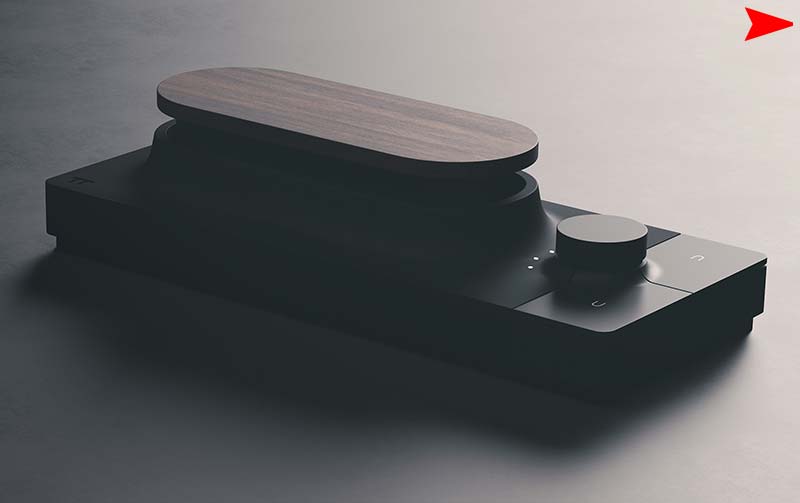
The control surface contains a patented technology that claims to translate even the subtlest gestures into MIDI, CV and USB control data. The Touché not only employed touch sensitivity on the surface, but also interpreted multiple planes of movement into data. In addition, the Touché not only tweaks the parameters of hardware synthesizers and Eurorack action, but also VST software right inside your digital audio workstation (DAW).
Words cannot even begin to describe precisely how the Touché works its magic, so check out the brief video below.
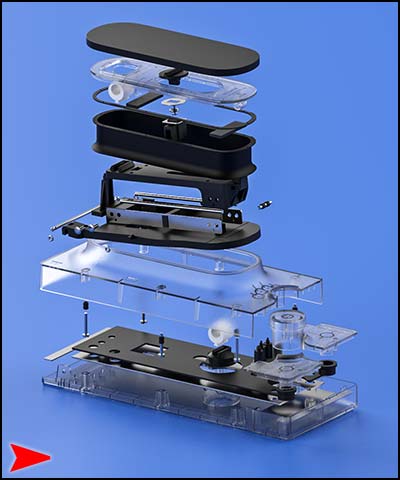

For a limited time only! Up to 80% off all Waves Bundles. PLUS use Waves promo code “CK901” for an additional 10%! This is Waves best deal yet! Get yours today before this special ends! GO!
The build quality of the Touché is phenomenal. Getting “under-the-hood” also showcases how Expressive E obtains the sensitivity level and precision of user input. Four independent sensors detect vertical and lateral movements. A slider hidden underneath the control surface selects the sensitivity level of the lateral movements. The oval wooden top has a satin finish that just begs to be caressed and is attached by magnets to the base which contain two silicone nubbins. This mount allows the user to press down anywhere on the surface in a uniform fashion to achieve a whole new world of expression.
Touché’s companion software Lié is what marries the control surface to your gear. Users can quickly map synth parameters to the Touché and Touché SE interface, creating sounds and performances with a new expressive depth they may never have realized their software or hardware synths were capable of and bringing new life to both your physical and soft instruments.

In fact, Expressive E just updated Lié to version 1.5. The new version comes with a new sound expansion called Carbon, a revamped interface, a reworked firmware for Touché, and several minor bug fixes. Carbon is also a free add-on for anyone who owns the MPE Collection, the sound bank that Expressive E created for everyone who uses controllers with MIDI Polyphonic Expression capabilities.
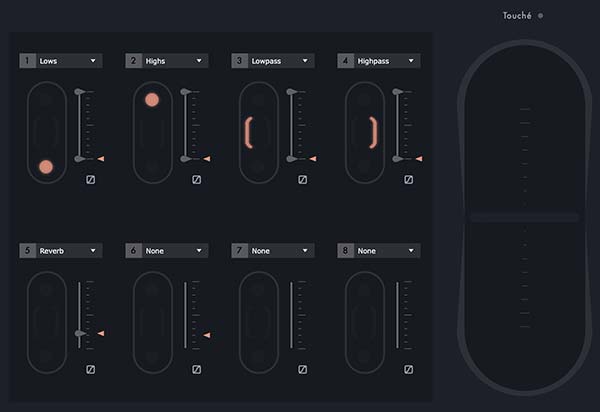
Along with small bug fixes and minor improvements, Lié 1.5.0 debuts a refreshed GUI with magnification presets as well as a reworked menu and browser structure for easier access to all important settings. Expressive E carefully reprogrammed a large part of the Touché firmware to further improve stability and reliability when using Touché without a computer to control hardware synths.
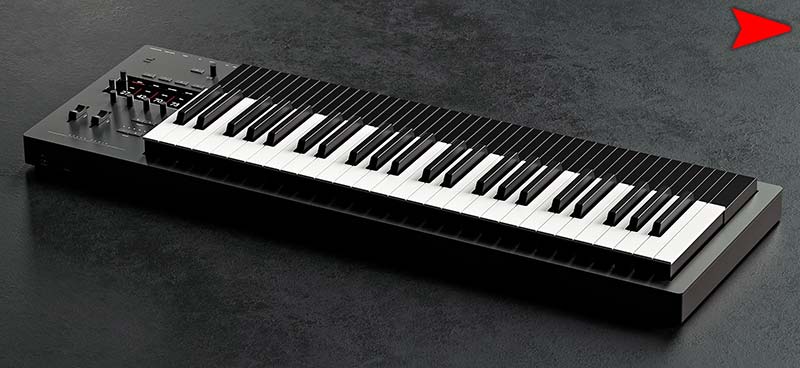
The Osmose Keyboard
Pushing the technology of the Touché to the next logical realm, the upcoming Osmose keyboard synthesizer integrates Expressive E’s multi-dimensional sensing technology for every single key of its entirely new A.K.A (Augmented Keyboard Action) keybed. Expressive E proclaims that the Osmose is “the first expressive keyboard that respects a player’s existing skills.” While Roli may have something to say about that, the Osmose is one impressive platform.
Osmose embeds Haken Audio’s EaganMatrix sound engine, which can employ virtual analog, FM synthesis, physical modeling and everything in between for sound design. Now this is a crucial attribute and one that can actually make or break the overall success of the Osmose. When we were testing out Roli’s Seaboard Rise, we were thrilled with the level of expression their MPE technology delivered, less so with the sonic limitations of their Equator softsynth. (See our Roli Seaboard Rise Review —Ed.)
Osmose’s Four Main Modes:
» Piano mode :: Osmose can emulate a classic keyboard controller, sending simple velocity messages.
» Poly Aftertouch & Global Pitch Bend :: Control your synth with Osmose’s Initial Pressure system and Poly Aftertouch. Every key can also control the global pitch bend of your synth.
» Multichannel MPE, MPE+ :: Osmose is also compatible with the major MIDI protocol for polyphonic expression, and MPE+, for the most advanced and accurate response.
» Standalone configuration :: Set up your MIDI configuration directly from the in-built screen, without the need to connect to a computer.
The video below provides an overview of the Osmose’s capabilities…
When Will The Expressive E Osmose Ship?
Osmose is set to debut during winter 2020/2021, even though it’s a tad confusing from their website as to when the unit will actually ship to consumers. Like other manufacturers, trying to get products to market, the company did incur some supply chain delays due to Covid19. Roméo Verlet, Head of Global Sales and Marketing, offered some clarity. “The research and development roadmap of Osmose is on schedule. However, COVID-19 did have an impact on our Chinese component suppliers. Despite our efforts to find workarounds during the last weeks, it has turned out that some components can’t be delivered by our suppliers on time, resulting in the following delay of our production schedule:
» Early Bird Offer – originally expected for Summer 2020 is now scheduled for Mid Fall 2020
» Second Chance Offer – originally expected for Fall 2020 is now scheduled for early Winter 2020
★ The regular market launch is still planned for Winter 2020/2021.
To learn more about Expressive E and the Osmose, FutureMusic interviewed Expressive E’s co-founder and Chief Executive Officer, Alexandre Bellot.
FutureMusic: How specifically did the Expressive-E team come together?
Alexandre Bellot: Expressive E started as three young engineers passionate about music. We were working in collaboration with a French research lab team called the LAM specialized in instrumental gestures. Step-by-step we explored this fascinating world of expressive instruments from all its amazing perspectives. We are constantly exploring new fields, and not only on the hardware front but in all technological aspects. We find challenges everywhere we work, including human interaction, haptic feedback, sound design, synthesis technologies, the MIDI standard, etc. And that doesn’t include all the marketing and commercial aspects, which require very serious work if you want to establish such a disruptive tech in a sustainable manner.
All these fascinating subjects allowed us to attract very talented people. They grew up with us, and most of them have been part of the team from the beginning.
FutureMusic: Was Expressive-E self-funded, or do you have an investor(s)?
Alexandre Bellot:
We are lucky to have sustainable support from several passionate investors who really believe in our work and support the projects. These kinds of projects require several years of research and development if you want to end up with robust results.

FutureMusic: What was the “spark” of inspiration or market need that resulted in the Touché?
Alexandre Bellot: Our inspiration clearly was the “touche d’intensité” introduced by the original Ondes Martenot instrument. It was invented in the 1920s by the French cellist and radio telegrapher Maurice Martenot. The Ondes Martenot is considered today to be one of the first electronic instruments. In order to compete with the expressivity of traditional orchestral instruments, it featured a special intensity lever, a mechanism similar to a Morse code telegraph key, which allowed fine, gradual control over the amplitude of its sound in real time. By pressing this lever, the player could continuously perform all kinds of incredibly dynamic articulations with the left hand, while defining the pitch with the right hand. All in all, the origin of the Touché project was to recreate the Ondes Martenot lever mechanism using modern engineering techniques and technology.
FutureMusic: The Osmose has the tap, press, press+tap, pitch|(wiggle), aftertouch, shake and strum modes of expression. How did the team decide on these particular talents?
Alexandre Bellot: Our first objective with the Osmose project was to build a piano-style keyboard with a truly good poly aftertouch, and that perhaps also offers the possibility to modulate the pitch.
I like the saying “you truly understand what you do, once you are doing it.” It perfectly represents Expressive E, and it is very apparent with Osmose. We prototyped quite a few things to achieve our initial goal, until the point where we realized that the technologies we were developing had massive potential. We had only one thing in mind, we did not want to distort the keyboard in its essence. The new expressive functions offered had to be integrated into the gestures pianists were deeply accustomed to. The idea should not be to reinvent a new instrument, but rather to imagine a new keyboard mechanism capable of offering new playing perspectives without upsetting the original playing habits that the pianist took so long to develop and master.
This is the reason why all the fundamental expressive functions (initial pressure, aftertouch, bending) are done with sinking and lateral movement gestures: They integrate naturally into the gestural habits of the pianist.
All of Osmose’s specific playing modes were discovered and designed thanks to all the work we did on Touché, and also by working on the unique and amazing interaction possibilities brought by the EaganMatrix sound engine. What’s fascinating with these kinds of projects is that everything needs to be done and implemented. We believe that this instrument still has very interesting possibilities to offer, and we are still working on exploring all its potential.

FutureMusic: Noticeably missing from the above modes of expression is pitch bending by sliding a finger up and down a key, why did you leave this out when other manufacturers have included it?
Alexandre Bellot: For a very simple reason: We didn’t want to have up and down sliding movements on a key. In our opinion, these kinds of gestures do not integrate well ergonomically with natural keyboard playing. It’s is not implemented in Osmose, but you can achieve similar results by moving your fingers back and forth on the key to obtain vibratos and “bendings.” Pianists have always subconsciously tried to achieve this effect while playing.
FutureMusic: When you were showcasing the prototypes to professional musicians, what were some the responses you received that you didn’t expect?
Alexandre Bellot: Showcasing our new instruments to professional musicians is always full of suspense. Will they find our baby as unique and as beautiful as we do?
We were confident of the first impression Osmose would make, but the response was way beyond our expectations. For example, we booked five private meetings during SynthPlex last fall in Los Angeles, California, USA. People were so seduced, about a hundred people showed up back-to-back in the small hotel room!
Perhaps the most beautiful responses are musical, when artists surprise you with the beauty of the things they play with an instrument they just encountered. It’s magical and gratifying for us. It kind of consolidates all the efforts we’ve put into this adventure.
FutureMusic: For many manufacturers who had MPE products in the market previously, one of the biggest hurdles they faced was effectively interfacing with software synthesizers to enable all of the MPE attributes in third party offerings, how will Expressive E address this with the Osmose to gain adoption?
Alexandre Bellot: First of all, Osmose comes with its own embedded sound engine, the EaganMatrix from Haken Audio. This sound engine is unique, and from our point of view, the most powerful sound engine dedicated to expressive instruments. If users want to play Osmose with their plugins, I invite them to check out our Osmose video on MIDI control. We developed features that allow them to do some very nice things without the MPE protocol.
And regarding MPE, I believe some amazing work has already been done, and it keeps evolving very rapidly. There are great synths on the market like Serum or Pigments that are already MPE compatible, and more and more DAWs are gradually stepping into the picture. Furthermore, we are aware that very cool manufactures are working on MPE products to be released. On our side, we are also developing several MPE plugins which, I hope, will please a lot of musicians.
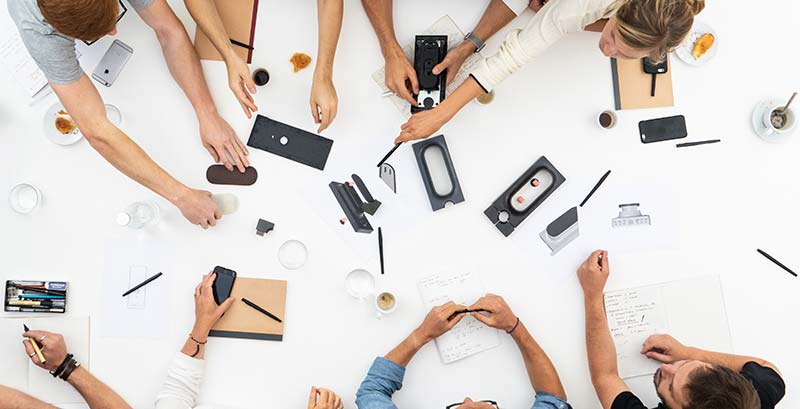
FutureMusic: What did you learn from the development of the Touché that helped you create the Osmose?
Alexandre Bellot: A lot of things, I’m not sure that we would have been able to create Osmose if we didn’t develop Touché and its whole ecosystem (Lié and all its presets and the Arché collection).
First of all, Touché was a true industrial challenge, because such mechanical systems are very complex to manufacture. Osmose is even more complex and elaborate to implement, so I’m not sure we would have been able to achieve such a level of quality without this previous experience.
I’m convinced that Osmose would have been impossible to create if we didn’t spend all this time working on sensitive interaction, sound design and synthesis systems. We are very proud of this know-how; it is essential from our perspective. Making a good instrument is first and foremost a matter of sounds and playing sensations.
Also, the Touché product line also allowed us to build a true team who learned to work together. And I think this point is fundamental when you work on such innovations in unknown territory.
FutureMusic: What was the biggest challenge Expressive E has faced to date in bringing the Osmose to market?
Alexandre Bellot: That’s a complicated question because Osmose was a big challenge from the get go. But there were two main challenges during the initial project: The first one was technological research: We truly had to step up our technological know-how to achieve quality results, and there were a lot of uncertainties.
Secondly, there’s the development of the global user experience. Every detail has to be carefully thought out, starting with sound design, the workflow, to the other features that will be offered. There is no room for errors; the product has to live up to very high expectations. Delivering a coherent product is, in my opinion, the biggest challenge.
And also, the current pandemic crisis makes it even more difficult. Some manufacturing parts are harder to get, and some borders are still closed to travel. But we manage to pull it off.
FutureMusic: Was there ever any thought about making the Touché a standalone instrument?
Alexandre Bellot: I know that some members of the team have already spoken about [a standalone instrument]. But honestly, we did not come up with anything substantial or conclusive. But we are not closing the door to such a project.
FutureMusic: Considering the human and economic toll of Covid-19, how does the visionary team at Expressive E feel this will impact the entire music industry in the next five years?
Alexandre Bellot: Well it’s an exceptional situation, and it’s unknown territory for everybody. We do not have any expertise in epidemiology and economics to have a clear point of view. But we hope things get better in the near future, especially the live [performance] market, which hopefully will regain momentum after this difficult period. Clearly, the sooner the better.
To learn more about what Alexandre Bellot and his team of mad scientists are cooking up at Expressive E, hit the link below!








